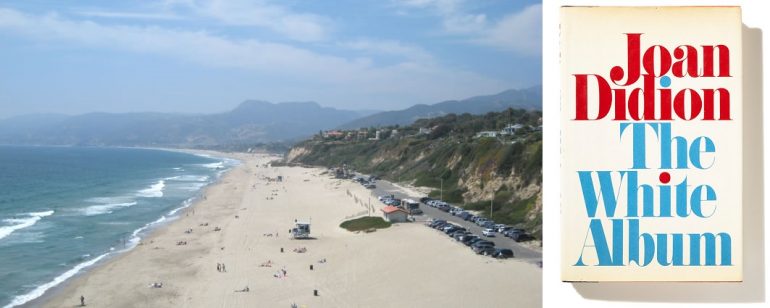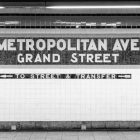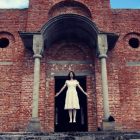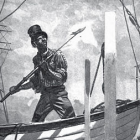The Limits and Freedoms of Literary Regionalism: Silence and the Self in Joan Didion’s Southern California Memoir

The Limits and Freedoms of Literary Regionalism is a continuation of a monthly series exploring literary regionalism, focusing on different authors who I consider to be “setting-specific writers.” The beauty of these authors’ contributions to literature lies in the fact that they are each able to tell diverse stories, all set against the same environmental backdrop.
As a Los Angeles native, I’ve been waiting for when the time felt right to explore the region that is Southern California. During the winter months, I wasn’t ready to occupy my mind with the beaches of my home—the sand that buffs and exfoliates every inch of your person, the sun that melts sky into sea until everything is navy with night, the lifeguard stations that perforate the soft edge of the horizon. Los Angeles is more than a coastal landscape to be sure, but no matter how far inland you go, the beach somehow remains the city’s essence. Maybe it’s the meeting of textures that mirror the kissing of sky, sea, sun—like how different cultures jut up against each other with special familiarity; the artificiality of Hollywood and the honesty of the neighborhoods that surround it creating a sort of cinematic balance. I can imagine myself sitting in traffic, the 405 Freeway still like city-wide rigor mortis, wondering how a city so easy-going is so difficult to understand.
Joan Didion makes it easier. Her 1979 book of essays The White Album is not only a road trip through the gridded streets and indecisive canyons of Los Angeles County, but also a meditation on Southern California as a setting for self-discovery. In the book’s final essay, “Quiet Days in Malibu,” we see Didion meeting people other writers (and the world) might treat more like footnotes than theses. Her true art is that of paying attention. Amado Vazquez, an immigrant orchid breeder from Mexico, catches the eye of the native Californian writer upon her visit to Arthur Freed Orchids in Malibu. True to Didion’s interest in environment, she explains that she “met Amado Vazquez not because I knew about orchids but because I liked greenhouses.” The essayist muses on the “particular light and silence of greenhouses” she has admired since her youth, in the same way that a person’s nostalgia might immortalize a childhood home; the memory is firm, but the appreciation active.
Though Didion’s observations are precise, they are not limited to the rocky coves of Malibu. Instead, it is her awareness of everything beyond that brings greater nuance to the region she knows most well. “Occasionally Arthur Freed’s brother Hugo, who was then running the business, would come into the greenhouse with real customers, serious men in dark suits who appeared to have just flown in from Taipei or Durban and who spoke in hushed voices, as if they had come to inspect medieval enamels, or uncut diamonds.” Unlike these customers and their focus on external value, Didion seems consistently more concerned with the interior and how it shapes our understanding of all things outside.
[Marvin Saltzman] had shown me how Amado Vazquez places the pollen from one plant into the ovary of a flower on another. He had explained that the best times to do this are at full moon and high tide, because phalaenopsis plants are more fertile then. He had explained that a phalaenopsis is more fertile at full moon because in nature it must be pollinated by a night-flying moth, and over sixty-five million years of evolution its period of highest fertility began to coincide with its period of highest visibility. He had explained that a phalaenopsis is more fertile at high tide because the moisture content of every plant responds to tidal movement . . . I could not take my eyes from the window.
It is this polite distraction Didion suffers from that illustrates the beauty of who Los Angeles really is. The details of the West are quiet and powerful, enough to make a woman trained in attention to language more interested in the unspoken—the place beyond the walls of syntax and orchid nursery.
Perhaps it’s obvious, but in case it’s not: “Quiet Days in Malibu” is the first piece of literary non-fiction I’ve covered in this series. This choice is intentional. The personal essay as a form is easily overlooked in the pantheon of literature in part, I think, because of its sobriety. In a place pollinated with empty promises and unrealized dreams, Los Angeles might be the perfect region for memoir; an idyllic place to meet oneself again after being reconstructed by the whims of the Pacific. Didion’s writing challenges traditional literary fiction through its sheer emotional intelligence and through its questioning of what is true. This constant digging, the Gold Rush-era panning Didion performs, makes me wonder if writers of fiction do quite the same work. But I am reminded quickly that they do, particularly the setting-specific writers on which I am focused. To write one’s home, one’s familiar space, is a memoir in itself—whether the rules of fiction apply or not. Any acute awareness of place lives in the same neighborhood as reality.
Joan Didion’s Southern California memoir takes us up the Pacific Coast Highway where the orchids grow in Malibu and seamlessly detours into a map of her own mind. The sounds of Los Angeles become white noise, drowned out by the quietness of Didion’s day, and she seems pleased knowing that “the silence in the greenhouse would again be total.”



